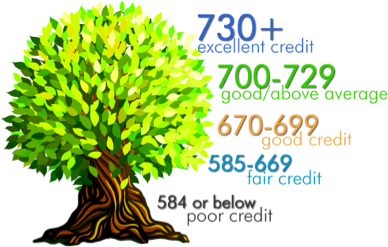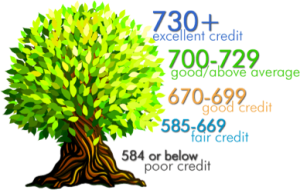Knowing how to access your FICO score & credit report and understanding what they mean is a crucial first step in fiscal responsibility. I recommend checking both of the above mentioned once a year.
For a free copy of your credit report from each of the three major credit reporting bureaus, go to www.annualcreditreport.com. If once a year isn’t enough for you due to past fraud or other personal reasons, consider checking a different bureaus report every four months (ex: TransUnion in January, Equifax in May, and Experian in September). You’re also entitled to a free copy if you’re denied credit from a lender. It’s important to check all three since the information shown on them varies, sometime drastically, and you never know which one your new lender will be looking at.
Be sure to check the entire report for accuracy and ensure the status of your accounts are properly displayed; open pays as agreed, closed by lender, settled… Finding out you have an old bill in collections while going through the process of making a major purchase is often too late. If you find errors, and most people do, you should file a dispute online to have those items corrected. This action puts the ball back in the lenders court and gives them 30-45 days to reply or the information will be shown in your favor.
Your FICO score, short for Fair Isaac Corporation, is an invented numerical calculation and is not free. The typical costs one could expect is $10-$20. Some consumers choose to use monthly credit monitoring services through their banking institution or pay a one-time fee on commercial websites like to see that much anticipated three digit score. You’re able to check your FICO as much as you wish, or are willing to pay for it, and your score will not be affected. Since this score is your report card on how well you’re able to repay your debts, don’t be surprised if you see a drop in your FICO score after becoming debt free. I can promise you’ll become far less concerned about your score when that times comes.
Keep in mind, your FICO score is a snapshot of your debts today, which explains why your number is different every time you check it. Let’s say you’re the type of consumer who uses their credit card to pay all monthly bills and then pays off the credit card at the end of the month. Your FICO score is going to be higher after you make your monthly credit card payment, so that would be a better time to allow potential lenders to pull your score.
A mistake I see a lot of clients make is closing old accounts while still carrying balances on others. Do not, I repeat, do not make this mistake. This causes your amount of available credit to decrease and has a negative effect on your score.
Active duty members of the military and their dependents are eligible to receive a FREE FICO score from me!



